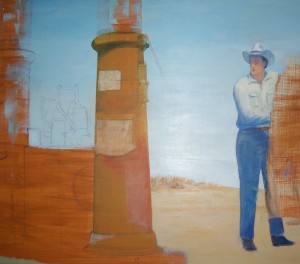Is it all right to draw on the substrate surface before you start painting the picture?
The answer is yes…maybe. It really depends on what your objective is and the type of painting you are planning to do. If you’re painting opaquely it allows you to plan as you go. You can make adjustments and repair mistakes. When painting transparently, some sketching may be required, but you must plan carefully to save the light or white areas.
Obviously, if your painting requires exact detail and proportions it would necessitate the execution of a preliminary drawing directly on the surface. It can become clumsy and awkward painting all the details (large and small) of a carefully executed drawing in one single layer, so it helps if you render stages of the drawings in sections.
An artist must be careful not to use any drawing tool that bleeds. I personally use pencil and then use a neutral color paint and carefully go over it with a line thin brush (I paint with acrylics). This way I don’t worry about bleeding or scruffing or erasing or any of those nasty things that can dirty and destroy a painting.
In the painting I’m working on now, you can see that today I made a drawing over a segment of the painting. The drawing has under painting and I have not painted lines over the pencil as of yet, I’ll do that in the morning.

I had a loose drawing for the entire painting (this is only a segment of it) so I could block and under paint the picture. Now I am going in and pencil drawing details to be line drawn with neutral colors before continuing. The main focus (the man) of the drawing, is pretty well finished. I may have to touch him up a bit to make sure the values of the overall painting works.
I painted him first, so I can use him as a guide to paint around him and hold the painting within proper values, chroma, harmony and balance.
